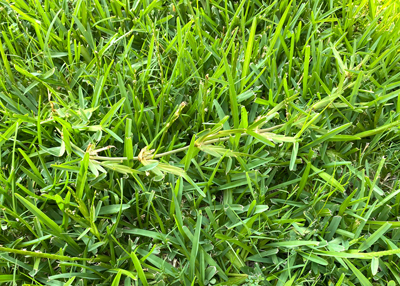Question of the Week Number 2: July 15, 2021
“Why are there runners on top of my St. Augustine lawn? How can I get them to stop forming?”

If you Google this question, you will find five or 10 answers going in all directions. They range from soil compaction to extremely healthy, dense turf to poor watering practices to accumulations of thatch. What’s a gardener to believe?
As a guy who has been mowing St. Augustine turf all of his life, I can tell you that this happens with all kinds of lawns. I can also tell you that it is really no big deal – nothing of great concern.
If you examine these looping runners, you will notice that the roots are very dark and shortened. That’s probably because they have failed to make contact with the soil. They have dried up in place.
I have usually found them in healthy St. Augustine that was full and vigorous, so I tend to lean toward the theory that the runners couldn’t make contact with the soil and the roots simply dried up. It happens most commonly in late June and July, the times when St. Augustine is growing most actively.
The solution (by my measure) is quick and easy. Before I mow my lawn, I walk across it and lift all these runners up with my foot so that when I mow, the blade will sever them. If I needed more runners to use in replanting somewhere else in my landscape, they would be ideal for harvesting and planting on 8-inch centers with a sharpshooter spade.
So, having just spent 45 minutes researching what professional turf people have written about “looping St. Augustine runners” online, I still have no definitive answer to give you. But I kept right on writing. I have effectively done what one program director once accused me of doing on my radio program. He said, “Neil, you’ve told folks more than you really know.”
